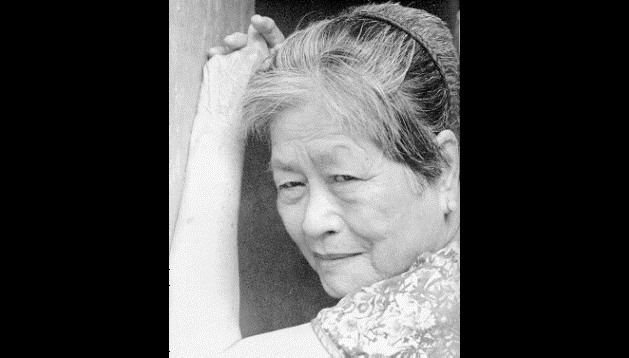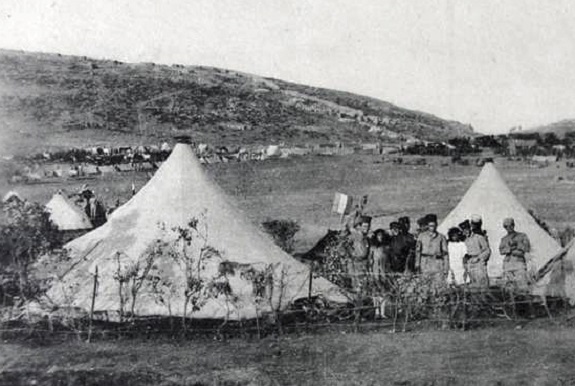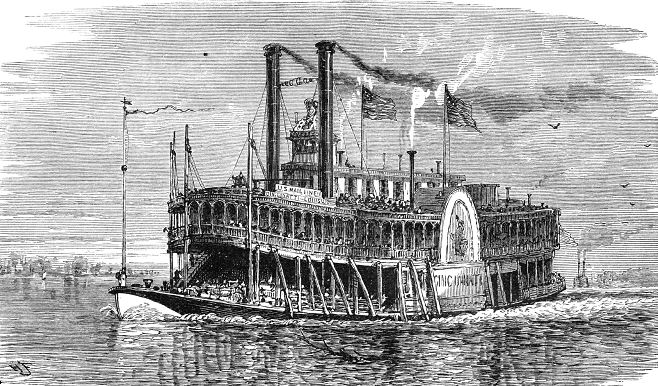10 A Civil War General Popularized The Term ‘Hookers’
Joseph “Fighting Joe” Hooker was a Union general known for his aggressiveness and popularity among the troops. This led him to be appointed commander of the Army of the Potomac in 1863 before he crumbled under pressure (and, to be fair, was knocked unconscious by a cannonball) at the Battle of Chancellorsville, giving Robert E. Lee one of his greatest victories. His first major role in the Civil War was organizing the defense of Washington, DC, following the Union defeat at the First Battle of Bull Run (or Manassas). In this capacity, he rounded up all of the city’s prostitutes into a single red-light district which was placed off-limits and thereafter known as “Hooker’s Division.” Later, his headquarters became known for wild, alcohol-fueled parties attended by “fallen doves,” as prostitutes were called. Hooker’s offices were described as a mix of barroom and brothel. On one occasion, a surprise visit by President Lincoln prompted a flock of the “doves” to flee from the HQ entrance. To complete things, the mass of prostitutes who followed the army were referred to as “Hooker’s Legions.” These three associations helped popularize the term “hooker” as slang for a prostitute, though it was in existence beforehand.
9 The Secret Service And DEA In Colombia
In April 2012, a sizable contingent of Secret Service agents was in Cartagena, Colombia, for President Obama’s trip to the Sixth Summit of the Americas. On the night of April 11, several agents went out on the town, got drunk, bragged about working for Obama, and picked up several women, including an escort named Dania Suarez. The following morning, Suarez was refused payment, which ignited a row that attracted the intervention of a police officer. It all ended with Suarez leaving with a third of her promised fee. While Suarez didn’t report the incident, the hotelier—whose premises were littered with broken glass, dog feces (from K-9 units), and a ruined pool—did so, which resulted in several dismissals and an apparent suicide. While no sensitive information was leaked on this occasion (and claims that the women could be Russian spies have little basis in reality), the incident did cast a light on widespread misconduct among Secret Service agents (who have reportedly cavorted with prostitutes in El Salvador, Panama, Romania, and China). To add to the farce, a member of the Homeland Security investigation was forced to resign . . . after being caught with a prostitute. Another element to the scandal is the fact that prostitution in Colombia has strong links to drug traffickers, and these criminals have a hostile relationship with the US due to the war on drugs and incidents such as the death of Pablo Escobar. This leaves the Secret Servicemen looking all the more reckless. Worryingly, an investigation prompted by the 2012 incident found that the DEA had been regularly partying with prostitutes hired by local cartels, as well as accepting expensive gifts and weapons. Subsequent queries revealed this had been occurring for at least a decade and resulted in the resignation of DEA chief Michele Leonhart.
8 Gerda Munsinger
Gerda Heseler worked as a prostitute in the late 1940s and regularly crossed the border between East and West Germany. In 1949, she was arrested by border police for engaging in espionage activities for the Soviets. These included stealing transit passages and money, as well as living with a Russian intelligence colonel. Shortly thereafter, she began working as a secretary at a hotel and soon picked up English. An attempt to migrate to Canada in 1952 was rejected. The following year, she wed demobilized US serviceman Mike Munsinger but was refused entry to the US. Eventually, she was allowed into Canada by using her married name. Once there, she settled in Montreal and worked a number of odd jobs, including prostitution and as a waitress at the Chez Paree nightclub. It was at the Chez Paree that she met Pierre Sevigny, a minister in the Progressive Conservative government of John Diefenbaker, with whom she began an affair. Sevigny and his ministerial colleague, George Hees, with whom Munsinger was also friendly, then sponsored her bid for Canadian citizenship. Unfortunately, the routine police investigation led to concerns that a sex worker connected with high-ranking government officials was a security risk. The prime minister was informed, and Sevigny was ordered to end their liaison. Munsinger consequently returned to Germany and lived in obscurity for the next five years. Then, in a completely unrelated parliamentary debate in 1966, she was name-dropped to criticize former Prime Minister Diefenbaker. A media frenzy resulted (Canada didn’t have many sex scandals), and a Toronto Daily Star reporter tracked Munsinger down, disproving speculation that she was dead. Among other things, she was called the “Mata Hari of the Cold War,” compared to Christine Keeler of the Profumo Affair, and characterized as a cheap tramp and mere barmaid, too unsophisticated to be a spy. (After all, everyone knows that real spies were college graduates who spoke at least five languages.) There were also bizarre claims she was a NATO spy, not a Russian. And Igor Gouzenko, a Soviet defector with a penchant for wearing a bag over his head to foil KGB assassins, also chimed in. A Royal Commission eventually found there had been no security breach while Munsinger herself made some media appearances, had a film made about her, and died quietly in 1998.
7 The Recreation And Amusement Association
At the close of World War II, Japan was petrified at the prospect of suffering widespread rapes by their supposedly sex-crazed American occupiers. This feeling was bolstered by years of military propaganda depicting the Americans as fiendish devils and savages. The unfortunate effect of this was first seen at the Battle of Okinawa, where many committed suicide for fear of rape or torture by Americans (though admittedly some of the suicides were “enforced” by Japanese soldiers). Indeed, when facing the imminent arrival of American troops, many ordinary Japanese sent their young women to the countryside, and one neighborhood association distributed cyanide capsules so that women could avoid “dishonor.” Thus the Japanese government organized the Recreation and Amusement Association (RAA), a front organization for a string of brothels that was launched in late August 1945, shortly after the surrender announcement. The RAA’s purpose was to protect the purity of Japanese blood (they were especially concerned about “defilement” by African-Americans) and the chastity of women by offering a “sexual dike.” At first, it was staffed by working prostitutes, but it quickly grew to include war widows and others forced into the occupation by economic necessity. Ultimately, the RAA employed up to 70,000 women. Some of these were subject to unscrupulous recruiting strategies filled with patriotic exhortations or shameless lies of promised office jobs. One such misled woman was teenager Takita Natsue. After losing all her relatives in the war, she jumped in front of a train after a few days of work. There are also some stories of outright coercion and enslavement, and the Japanese may have even shipped in foreign women. The American high command acquiesced for several months before the high rates of venereal disease and the moral concerns of army chaplains caused General Douglas MacArthur to ban the practice in March 1946.
6 US Military Base Prostitution In Korea
In 1960s Korea, the government did all it could to accommodate the US military by encouraging women to work as prostitutes at military bases in an attempt to forestall an American withdrawal. They were given virtuous-sounding names like “patriots” and “civilian diplomats,” as well as etiquette classes and praise for bringing money into the struggling South Korean economy. Despite this, their actual existence was one of degrading medical examinations which, if they were found to be diseased, resulted in virtual imprisonment. Some women even broke their legs trying to escape from the upper-story rooms they were locked in. Alternately, there are allegations that clubs were raided by American military provosts and Korean police to detain women suspected of spreading disease (the women were identifiable by the number tags they were forced to wear). Many women, even if they originally “volunteered,” quickly became trapped. Things like makeup and clothing were rented out by bar owners (essentially pimps), who also provided loans when the women were ill or otherwise needed assistance. Having incurred this debt, the women were not allowed to leave unless it was repaid. The managers were also often guilty of rape. Some US military personnel even engaged in trafficking women to the United States via sham marriages, with the women then deposited into the massage parlor circuit. As for those in Korea, they found themselves stigmatized and left to rot in poverty. In 2014, 120 of them eventually banded together to sue their government, though they only seek an apology and the relatively meager compensation of $10,000 each.
5 Salon Kitty
Kitty Schmidt (at left in the photo above) was the madam of a high-class Berlin brothel and had sequestered a small fortune overseas. Feeling uneasy with life in Nazi Germany, she sought to leave the country and enter early retirement. Instead, she was arrested at the Dutch-German border and taken to the Gestapo headquarters, where she was interrogated by Walter Schellenberg. Schellenberg, a deputy to the infamous Reinhard Heydrich in the SS intelligence service, blackmailed Kitty with extensive evidence of her smuggling finances and use of false documents. Her brothel, Salon Kitty, was renovated to allow the installation of surveillance equipment and staffed by girls screened by the Nazis. Salon Kitty became a regular attraction for high-class Nazis and foreign diplomats, whose sexual kinks were recorded for potential blackmail. Mussolini’s son-in-law and Italian foreign minister, Count Galeazzo Ciano, was recorded while ridiculing Hitler. Heydrich himself even made several “personal inspections,” though he made sure all surveillance equipment was turned off. However, the most influential piece of intelligence from Salon Kitty was actually obtained by the Allies. The British had sent one of their agents into the brothel and successfully tapped the wires. As a result, the UK was privy to a conversation between Nazi Foreign Minister Joachim von Ribbentrop and his Spanish counterpart, Ramon Serrano Suner, where the two were caught discussing a potential German invasion of Gibraltar. The British consequently beefed up the defenses around Gibraltar and dissuaded the Germans from their proposed attack. The Salon was subsequently damaged in an air raid, and intelligence operations discontinued.
4 Rosa Henson
Maria Rosa Luna Henson was born in the Philippines in 1927—the result of her mother’s systematic rape at the hands of her landlord—and endured an impoverished youth. Following the Japanese invasion in 1942, she joined the Hukbalahap (aka Huk) resistance movement after suffering multiple rapes at the hands of a Japanese officer. A year later, she was taken into custody at a Japanese checkpoint while transporting provisions, while her two male comrades were allowed to pass unscathed. She was taken to the town hospital, which had been converted to a “comfort station” and contained six other women. The day after her arrival, she was raped by 24 men. This became a daily routine, lasting for eight hours with sometimes with up to 30 soldiers. Underlining her extreme youth is the fact that this happened constantly. The other women had a few days off per month after their period, but Henson was given no respite because she was not yet menstruating. Occasionally, the soldiers suffered impotence or premature ejaculation, which resulted in them taking their anger out on Henson with severe beatings. In addition to this, she dealt with meager rations, a miscarriage, and two bouts of malaria. During her illness, she was nursed by a Japanese officer named Tanaka, who, in a bizarre twist of fate, happened to be the same officer who had initially raped her in 1942. This led Henson to grapple with conflicting feelings of anger, gratitude, and occasionally, pity. Ultimately, a Huk raid freed Henson after an excruciating nine months. Following the war, she struggled with whether to reveal her “shameful” experience, and she eventually became the first Filipina to do so in 1992. Subsequently, she wrote a book of her experiences and became involved in lawsuits against the Japanese government which drew in the controversial Asian Women’s Fund (AWF). The AWF is controversial because it is merely funded by the Japanese government, rather than being a public organization in and of itself. Some see this as the Japanese government sidestepping full-fledged responsibility. Henson, however, accepted the AWF’s compensation and died in 1997 at age 69. She passed away in the Manila home built from the money she had received.
3 The North African Prostitute Nurses Of Dien Bien Phu
The young women from Ouled Nail in Algeria had a tradition wherein they would work as prostitutes to assemble their dowry. Meanwhile, Algeria’s colonial overlord, France, had an institution called the BMC. This originally stood for Bataillon Medical de Campagne (Medical Field Battalion) but gradually morphed into Bordel Mobile de Campagne (Mobile Field Brothel). Despite some controversy, the BMCs had been allowed to continue because they provided a sexual release for soldiers that supposedly reduced instances of rape and allowed better monitoring of venereal diseases. In Vietnam, the BMCs were especially useful . . . for the enemy. How? Well, local “Trojan whores” had a tendency to betray French bases from the inside. On the flip side, North African–staffed BMCs served admirably well during the French war in Indochina. Two girls were even recommended for the prestigious Croix de Guerre after making an arduous two-day trip to an isolated outpost to keep up morale and then remaining cool under fire when ambushed on their return. This recommendation was quickly refused because it was considered bad PR, especially with regard to the prudish Americans who were funding the French war effort. When it came to the war’s climax, there were two BMCs inside the base at Dien Bien Phu, consisting of 11 Algerians and six Vietnamese. In addition to their regular duties, the women assisted the overwhelmed medical facilities by acting as nurses and comforting the dying. Several died in the fighting, but the survivors were among the last to surrender in May 1954, having endured an almost two-month siege.
2 The Strange Odyssey Of Nashville’s Civil War Prostitutes
During the American Civil War, Union General William Rosecrans became concerned at the amount of time his troops were spending with Nashville’s prostitutes and the corresponding rate of venereal disease. Thus, in July 1863, he commissioned George Spalding, the city’s provost marshal, to deport all of Nashville’s sex workers. Spalding dutifully rounded up 111 of Nashville’s most infamous (and white) ladies, but he had no means to expel them. Eventually, Spalding and Rosecrans managed to strong-arm John Newcomb, owner of a brand new steamboat called the Idahoe, to take on the unusual cargo. Unfortunately, this plan failed to account for the fact that no other cities were willing to receive Nashville’s ladies. Sailing upriver, Newcomb was forbidden to dock at Louisville, and Cincinnati was equally reluctant. He was refused permission to land anywhere in Ohio, and the Idahoe had to dock across the river in Kentucky. While Newcomb grew increasingly frustrated, his passengers were also in bad shape. They had been rushed aboard and lacked a change of clothes. Many took to alcohol, a handful jumped ship to swim ashore, and there was even an alleged knife fight among the ladies. Eventually, the Idahoe returned to Nashville, where black prostitutes had immediately filled the niche left by the deportees. Spalding was now forced to take radical action. He legalized the sex trade. In marked contrast to his first idea, this scheme proved a resounding success. The women were made to register and received regular medical checkups, with the infected receiving free medical treatment. This resulted in a marked increase in hygiene and decrease in new infections, but the legalization was discontinued following the end of hostilities and return to a civilian government. Poor Newcomb, meanwhile, was left with soiled mattresses and a badly damaged stateroom, and it was only after two years and a direct request to the Secretary of War that he received the compensation he had been promised. No amount of money, however, could save the reputation of his ship, which was known forever as the “Floating Whorehouse.”
1 Nazi Concentration Camp Sexual Slavery
Among the Nazis’ many evils, their involvement in forced prostitution and sexual slavery is less well-known, especially in comparison to Japan’s comfort women. Nevertheless, it was quite widespread, with recent research by the Holocaust Memorial Museum identifying 500 brothels among the 42,500 Nazi camps and ghettos spread across Europe. These included euphemistically termed “special task forces” in such infamous camps as Ravensbruck, Auschwitz, and Dachau. Many women “volunteered” for these forces as a last resort to stay alive because they were offered such luxuries as food, disinfectant baths, medical attention, and stints under a sunlamp. Others were tricked into thinking they’d be set free after six months. Their supposedly voluntary nature has resulted in some stigmatization of the victims, and most didn’t seek postwar compensation, both because they felt it would be degrading and because sexual crimes weren’t at the forefront of postwar concerns. In addition to providing “recreation” for SS officers, the camp brothels were also used to incentivize camp laborers and reward prominent camp occupants such as foremen and heads of barracks. The SS was vigilant when it came to STDs, but contraception was left up to the women. As such, pregnancies did occur, albeit rarely because many women had been forcibly sterilized or rendered infertile by their suffering. Pregnant women were removed from the brothel and subjected to abortions. Heinrich Himmler, who oversaw the camp brothel system, was also deeply perplexed by homosexuality and the “danger” it posed to the German nation by reducing birth rates. In his view, homosexuality was a learned behavior and could thus be cured. In addition to “hard work” (to make them more manly) and hormonal treatments, gay men were also subjected to regular, forced visits to the camp brothels. There was even a more subtle scheme wherein homosexuals were placed in labor battalions with “whores” who were instructed to sexually solicit them. It goes without saying that these programs were resoundingly unsuccessful, and indeed often backfired as the trauma of the experience left one prisoner certain that he’d never be with a woman again. Tyler is a lazy misanthrope who occasionally throws words at the internet to escape the ever-present threat of boredom. You can abuse him via email (here or here) or Facebook.
























